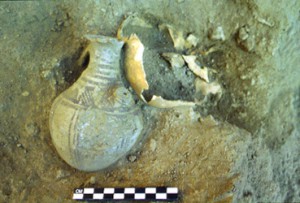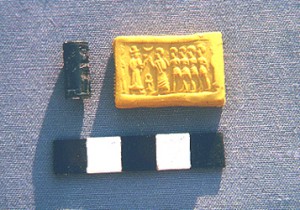Evidence from two soundings to virgin soil in the Acropolis North and Acropolis East indicates that Umm el-Marra was founded ca. 2700 BC, in the earlier part of the Early Bronze Age (Umm el-Marra Period VI). This date is suggested via ceramic parallels to earlier third millennium BC occupations at Tell Sweyhat and Amuq G-H....
Urban Origins: the Early Bronze Age (ca. 2700-2000 BC, Umm el-Marra Periods VI-IV)



